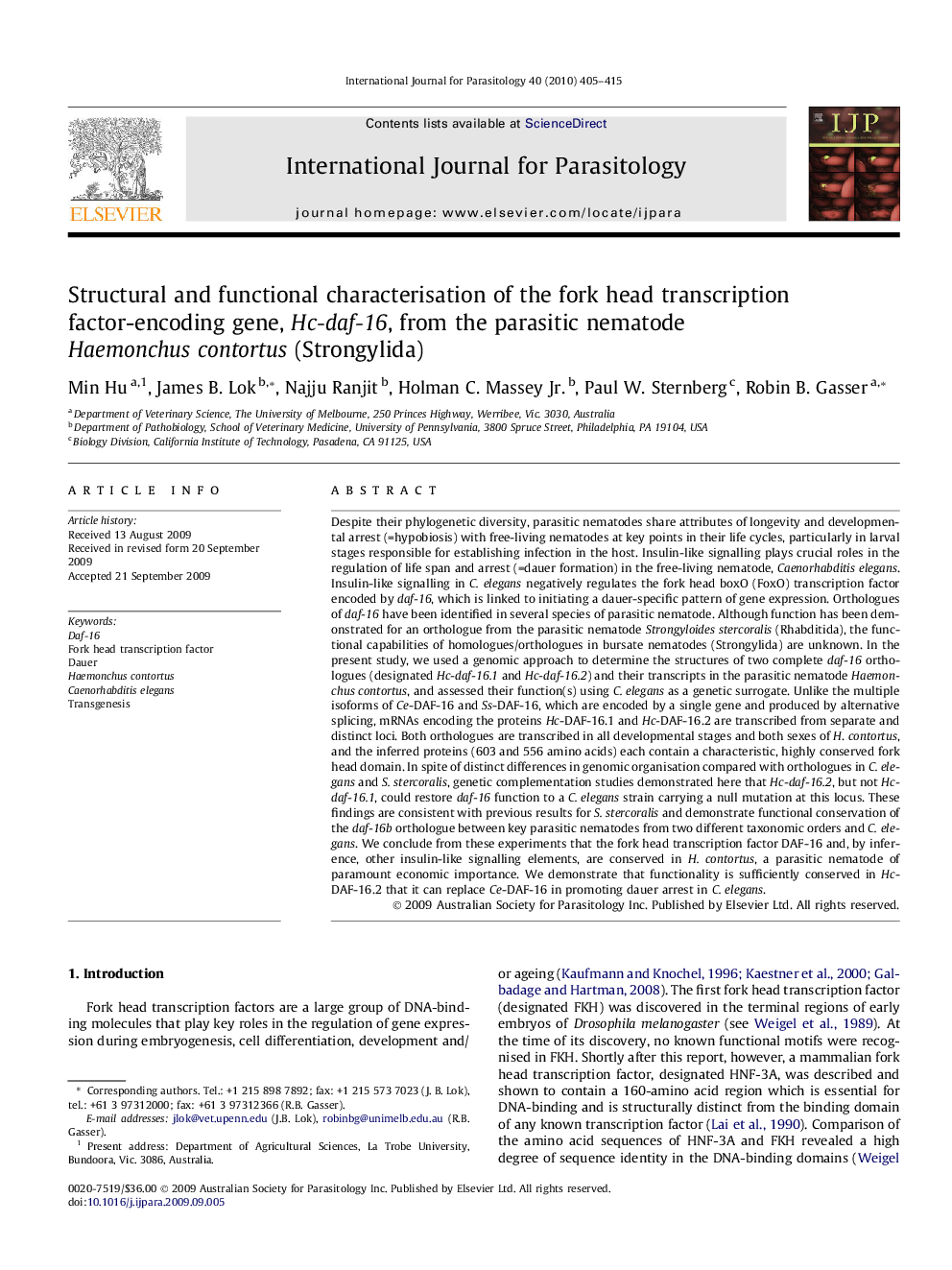| Article ID | Journal | Published Year | Pages | File Type |
|---|---|---|---|---|
| 2436562 | International Journal for Parasitology | 2010 | 11 Pages |
Despite their phylogenetic diversity, parasitic nematodes share attributes of longevity and developmental arrest (=hypobiosis) with free-living nematodes at key points in their life cycles, particularly in larval stages responsible for establishing infection in the host. Insulin-like signalling plays crucial roles in the regulation of life span and arrest (=dauer formation) in the free-living nematode, Caenorhabditis elegans. Insulin-like signalling in C. elegans negatively regulates the fork head boxO (FoxO) transcription factor encoded by daf-16, which is linked to initiating a dauer-specific pattern of gene expression. Orthologues of daf-16 have been identified in several species of parasitic nematode. Although function has been demonstrated for an orthologue from the parasitic nematode Strongyloides stercoralis (Rhabditida), the functional capabilities of homologues/orthologues in bursate nematodes (Strongylida) are unknown. In the present study, we used a genomic approach to determine the structures of two complete daf-16 orthologues (designated Hc-daf-16.1 and Hc-daf-16.2) and their transcripts in the parasitic nematode Haemonchus contortus, and assessed their function(s) using C. elegans as a genetic surrogate. Unlike the multiple isoforms of Ce-DAF-16 and Ss-DAF-16, which are encoded by a single gene and produced by alternative splicing, mRNAs encoding the proteins Hc-DAF-16.1 and Hc-DAF-16.2 are transcribed from separate and distinct loci. Both orthologues are transcribed in all developmental stages and both sexes of H. contortus, and the inferred proteins (603 and 556 amino acids) each contain a characteristic, highly conserved fork head domain. In spite of distinct differences in genomic organisation compared with orthologues in C. elegans and S. stercoralis, genetic complementation studies demonstrated here that Hc-daf-16.2, but not Hc-daf-16.1, could restore daf-16 function to a C. elegans strain carrying a null mutation at this locus. These findings are consistent with previous results for S. stercoralis and demonstrate functional conservation of the daf-16b orthologue between key parasitic nematodes from two different taxonomic orders and C. elegans. We conclude from these experiments that the fork head transcription factor DAF-16 and, by inference, other insulin-like signalling elements, are conserved in H. contortus, a parasitic nematode of paramount economic importance. We demonstrate that functionality is sufficiently conserved in Hc-DAF-16.2 that it can replace Ce-DAF-16 in promoting dauer arrest in C. elegans.
Graphical abstractFigure optionsDownload full-size imageDownload high-quality image (79 K)Download as PowerPoint slide
